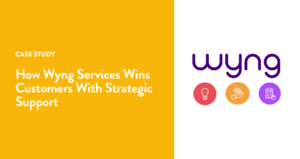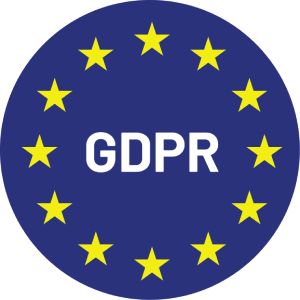That was a ton of fun! We just wrapped up 45 minutes where our own co-founder Wendell Lansford chatted with Steph Liu from Forrester about zero-party data (ZPD) and privacy-first personalization. If you made it, thanks for attending and making it memorable. If you didn’t, here are the highlights at lightning speed.
Read on to get the 3-minute summary, or watch the whole thing now.
{% video_player “embed_player” overrideable=False, type=’scriptV4′, hide_playlist=True, viral_sharing=False, embed_button=False, autoplay=False, hidden_controls=False, loop=False, muted=False, full_width=False, width=’1920′, height=’1080′, player_id=’68238925174′, style=”, conversion_asset='{“type”:”CTA”,”id”:”22797e7d-1e5b-46f3-80a4-33fbda9a9f4e”,”position”:”POST”}’ %}
Zero-party data is the answer to the privacy-personalization paradox
76% of people get frustrated when they don’t have a personalized experience according to McKinsey. So brands are trying to personalize every experience to catch people’s attention and engage them around a product or service. The problem is that this requires a lot of data – and most of the data marketers have is the wrong data today.
Most experiences and personalization are driven either by first- or third-party data today: demographic data from forms (name, age, gender, job title, etc.) or behavioral data (what you clicked on, searched for, looked at, etc.). However, most products and services are designed to fill needs or desires – and needs and desires often span many demographics and can be hard to infer from behavior.
So brands make assumptions about which problems align best with certain people based on statistical analysis of behaviors and demographics, and then they create ads and content based on those assumptions. There is an old saying about assumptions, and today we are all familiar with these experiences and “recommendations” online based on assumptions – like creepy ads that seem to know too much or emails that offer solutions you don’t need. This has been happening so much that only 22% of people think that the data collection that brands do today actually improve their experiences according to Forrester.
At the same time, people are becoming more protective of their data. There are many laws and technological changes that are cutting off access to of the old types of behavioral data from apps and browsers. And consumers don’t want to be tracked anymore – with the Apple iOS 14 update people were given the ability to opt out of tracking across apps and 84% did so.
People want privacy, right up until they don’t! This is a huge paradox – if people demand personalization, and yet don’t want to provide the data to power that personalization, then how do you give them what they want?
The answer is privacy-first personalization using zero-party data.
What is zero-party data (ZPD)
Let’s start with ZPD. We covered that in detail a while back, but Forrester has the best definition we’ve seen to date.
{% video_player “embed_player” overrideable=False, type=’hsvideo2′, hide_playlist=True, viral_sharing=False, embed_button=False, autoplay=False, hidden_controls=False, loop=False, muted=False, full_width=False, width=’1920′, height=’1080′, player_id=’68241270705′, style=” %}
Zero-party data is all about getting the data that is the most important and hardest to infer from behavioral analysis – customer needs and preferences.
Zero-party data solves the privacy-personalization paradox in 3 key ways:
- Permission is inherent – so privacy is never going to be violated with ZPD.
- It eliminates guesswork. If you want to know something about consumers, don’t guess based on behaviors – JUST ASK!
- It can be used instantly to drive personalization. If you know what someone needs, you can recommend a solution right away.
Now that you understand the need for zero-party data, you might also be asking yourself if increasing needs for privacy and personalization also necessitate a change in how you collect and use data. The answer is yes.
Privacy-first personalization is how you build customer relationships WITH ZPD
The first objection many marketers have to the idea of zero-party data is that people don’t want to give away that type of information. However, people fill out forms and sign up for emails all the time – if they feel like it is worth it. The challenge is making the benefit obvious for any piece of information, and for making the experience easy and obvious. That is what is at the heart of privacy-first personalization.
We summarized it down to three rules to help design privacy-first personalization.
- Be a data minimalist. Think about the least amount of customer data you need to solve their most immediate problem. Then repeat that for every problem you can solve until you have a complete picture of what the customer wants built progressively over time.
- Figure how to turn each piece of data into a customer benefit instantly at the most relevant moment. In the webinar, Steph Liu was incentivized to take a foundation finder quiz on a cosmetics website for the benefit of forever having that foundation shade in her records when she needs to reorder in the distant future.
- Give customers transparency, choice, and control of their own data and how it is used. In our examples on the webinar, this is about having a customer preference portal where they can see, delete, or update their data whenever they want.
The only thing more difficult than changing is business as usual
Personalization is difficult. I have been in marketing for 15 years, and it’s always a challenge to find the right data, verify it, and then use it to create personalized messages or experiences. The activation of customer data usually happens days or weeks after the customer volunteered the data to you, and by that time, customers have forgotten about that experience and what problem they were trying to solve. At best, this makes for a clunky experience and indifference towards your brand.
Getting started with privacy-first personalization and zero-party data may sound daunting, but it is actually easy if you think of one piece of data, one relevant moment, and one experience at a time. There is no need to completely restructure your entire experience right away.
You start by looking at the customer problems you are solving, understanding the data you need from customers in order to solve that problem for them, and then building the easiest possible experience (AKA Microexperiences) that trigger right when it is needed for the right people.
This formula should really help!
Examples and More Details
Steph shared a lot of examples of what to do and what not to do from a customer experience and privacy expert’s perspective. It’s definitely worth watching.








